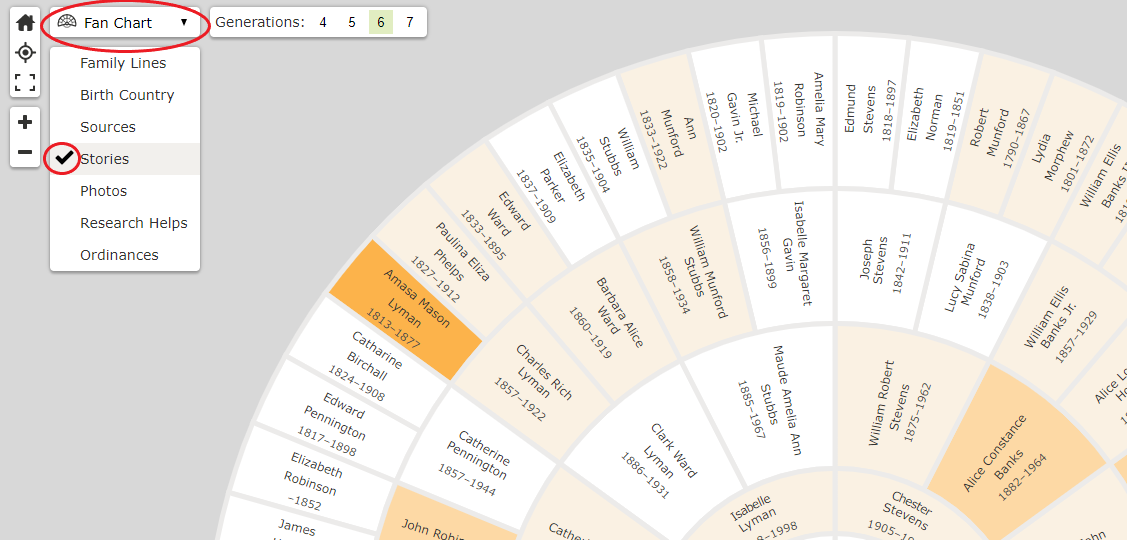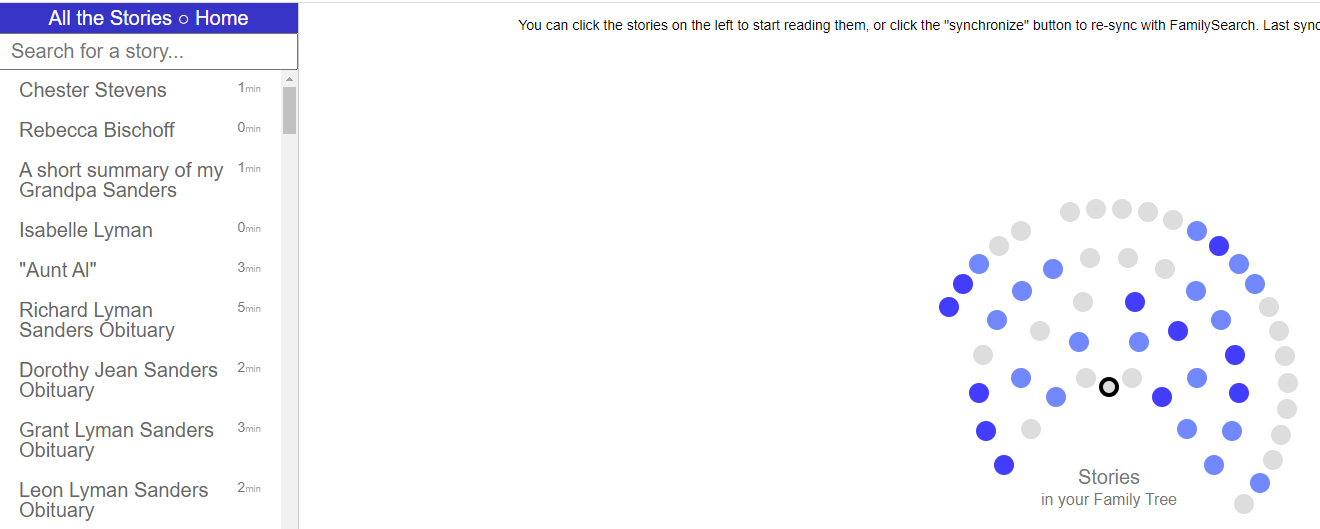
“How do we make our ancestors real? We tell their stories.” (Rosemary Wixom)
My genealogy journey began a number of years ago when I decided to compile a book about my ancestors. As I discovered stories that I had never before heard, I remember thinking to myself over and over, “I never knew I had such interesting ancestors!” One shining star that I discovered during this phase of my journey was Laura Clark Phelps.

Her life was brief and full of hardship, but her acts of courage and conviction have made her a hero in the eyes of her descendants. Her story was featured in a newspaper article in 2004. [1] Reading about her life makes me think that of any of my ancestors, her story is one that would make a great movie! She certainly experienced all of the right elements:
A Love Interest
Seventeen year-old Laura Clark (or Laury, as she called herself) met Morris Charles Phelps when he arrived in her hometown to visit relatives. They were married two years later in Illinois on 28 April 1826. [2] Theirs was a story of deep and abiding love. Morris wrote the following poem about his beloved wife:
The Lord in much mercy looked down from above
And gave me dear Laura, an Angel of Love.
Her form was most lovely, her countenance fair,
Her sparkling blue eyes and her fair flowing hair.
Oh Laura dear Laura, still gentle and kind.
Thy heart is all goodness and pure is thy mind.
How oft in affliction still faithful you’ve proved.
In sorrow and trouble my spirit has soothed.
Morris Phelps (1805-1876)
Although Laury died in 1842 and Morris soon remarried, he wrote almost 30 years later of his first love Laury, “There never was a woman on earth that I thought more of and that affection was never diminished.”
Conflict
Morris and Laury were living near Chicago, Illinois and Morris was away from home on business when Laury wrote to him of a new book and a new church was being formed. The couple experienced a “curious anxiety, mingled with joy” and ended up joining this new religion, the “Mormons”‘ (The Church of Jesus Christ of Latter-Day Saints). By joining themselves with the church, they opened themselves up to religious persecution and conflict. Mobs were common on the American frontier during the 19th century, and men armed with guns often demolished houses, whipped and beat men, and threatened and frightened women and children. The Phelps family fled first to Clay County, Missouri, and then on to Far West, Missouri.
Heroic Actions
Sometime after their move to Far West, the prophet Joseph Smith arrived to conduct some church business. The mobs were stirred up again and one day began chasing Joseph and his brother. The two ran by the Phelps home and Laury hid them in her house behind the clothes curtain. When the mob rushed in and their leader said, “Where are they? We know they are here, we saw them come,” she answered calmly and with apparent unconcern, “No, gentlemen, they are not here, but you are welcome to look all you want to.” She tried to look unconcerned while the mob made a hasty search and left. Upon emerging from his hiding place, the Prophet said, “Sister Laura, there are black lies and white lies and that certainly was a white one that came from your lips.”
Heber C. Kimball, another leader of the church, wrote of Laura, “During our persecution in Missouri in 1839 she endeared herself to her many friends by her acts of kindness, and in many instances her conduct was truly heroic. When my life was sought at Richmond, and . . . she interceded with my pursuers, who were nearly 30 in number, and actually convinced them that I was another person, altogether, and the pursuit was stopped.” [3]
Kimball also wrote of Laura’s heroic rescue of her husband Morris and several other men who had been imprisoned in Richmond, Missouri: “In company with her brother, [Laura] left her home in Iowa Territory, together with her tender offspring, and traveled a distance of nearly two hundred miles on horseback, to assist in the deliverance of her companion, or devise means whereby he and his brethren might make their escape from Prison; which thing was effected, and she left among a savage horde to suffer such abuses as they saw fit to inflict upon her, but through the goodness of God she was delivered from their hands and returned in peace to the bosom of her family and friends.” [4]
A Tragic Ending
Because of the persecution they suffered, Laura worked and traveled day and night in all kinds of weather as a midwife and doctor to help support the family. She suffered from overexertion and exposure, which took a terrible toll on her and she contracted pneumonia, from which she died on 2 February 1841 at the age of 34 years. The prophet Joseph Smith summed up her life in his diary with the following words:
Sister Laura Phelps, wife of Morris Phelps, died, aged 36 years. She was driven from Jackson county in 1833, was in the persecution of Missouri, in 1838, and went from Iowa to Missouri to assist in liberating her husband, and was left in the prison yard when he made his escape, willing to suffer all the abuses a savage horde could inflict upon her to set her companion free from the grasp of his murderous enemies. Her rest is glorious.
Joseph Smith, “Death of Laura Phelps,” History of the Church, volume 4, page 513.
Do you know the stories of your ancestors? If you have a FamilySearch account, here are three easy ways to access them:
Access Them From the Fan Chart View in FamilySearch
First, log in to FamilySearch, then click Family Tree > Tree. Toggle the Tree View in the upper left corner to “Fan Chart” and make sure “Stories” is selected. People on your tree with stories attached will be highlighted with varying degrees of orange, depending on how many stories are attached to their profiles. Click on a person’s name > Person > Memories to access the stories.

You can also view a fan chart with stories highlighted like this in the Family Tree app. First, go to the settings in the app, switch to the Fan Chart View, go back to your tree, then tap the blue icon in the lower right corner and choose “Stories.”

Use the All the Stories Web Application
Another easy way to see all your ancestors’ stories in one place is to use the All the Stories web application. Simply log in with your FamilySearch credentials and you will see a list of all your ancestor stories in one place. Click on one of the stories on the list to access it. Click on one of the blue dots on the fan chart to see the ancestor’s name and bring up a list of stories that pertain just to that ancestor.

Ask an Older Relative to Share Their Stories
Finally, if you don’t have many stories in FamilySearch, don’t be shy about asking older family members to tell you what they know, and then record the stories and save them to the Memories section of FamilySearch for posterity.
What Stories Will You Tell?
Knowing our ancestors’ stories helps us come to know them as real people. It also helps us understand where we came from and what we are capable of. Ensuring that our children and grandchildren come to know their ancestors will create a strong family narrative and help them thrive. What stories will you tell?
[1] John L. Hart, “Courage a legend as she faced mobs: History’s forgotten woman rescued Church leaders during Missouri period,” The Church News (Salt Lake City, UT), 19 June 2004, page 10; digital images, The Church News (https://www.thechurchnews.com/archives/2004-06-19/courage-a-legend-as-she-faced-mobs-96354 : accessed 28 September 2020). [2] FamilySearch (https://familysearch.org : accessed 28 September), database, profile for Laura Clark, KWJB-M16, uncited marriage record attached as a memory to Laura’s profile. [3] Heber C. Kimball, “Obituary (Laura Clark Phelps),” Times and Seasons volume 3, number 9, 1 March 1842, p. 713; digital version, centerplace.org (http://www.centerplace.org/history/ts/v3n09.htm : accessed 28 September 2020). [4] Ibid.
